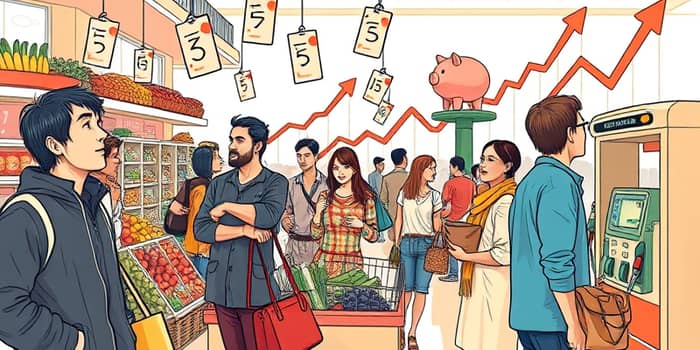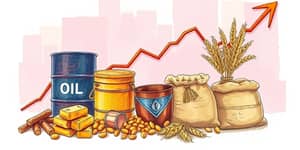
As prices climb and budgets tighten, millions of consumers are rethinking every purchase. Understanding the mechanics behind recent inflation trends can empower you to protect your finances and maintain purchasing power.
The Consumer Price Index rose by 2.3% year-over-year in May 2025, reversing April’s slight cooling. Core measures—including the Fed’s preferred PCE gauge—are running even hotter, at 2.7% to 3.05%, driven in part by food and housing costs.
Headline inflation stood at 2.3% in May, up from 2.1% in April. Core inflation, which excludes volatile food and energy prices, ticked up to 2.7% year-over-year. Meanwhile, the Fed’s nowcast for July points to 2.60% headline and 3.05% core inflation.
This data highlights a persistent rise in costs, with essential categories—especially food—at the forefront. Even modest rates of inflation gradually erode buying power, making everyday decisions increasingly consequential.
When prices accelerate, each dollar buys less. The latest surge means shrinking purchasing power across the board, prompting families to adjust spending patterns.
Food prices climbed 2.9% year-over-year in May, straining grocery and restaurant budgets. Gasoline saw a slight relief in May compared to April, but future tariff impacts could reverse that trend.
Discretionary spending categories, where inflation has slowed, offered a brief respite. Yet many consumers used extra budget room to stockpile goods ahead of potential tariff-driven spikes.
Amid persistent price pressures, proactive planning can make a meaningful difference. By adopting cost-saving tactics and staying informed, you can offset some of inflation’s sting.
For those facing more severe impacts, such as lower-income households, prioritizing government and community assistance programs can help bridge the gap when costs bite hardest.
Locking in fixed-rate loans or refinancing high-interest debt can also preserve financial stability, especially if interest rates stay elevated as the Fed holds firm to counter inflation.
Although everyone encounters higher prices, not all feel the effects equally. Families with tight budgets spend a larger share on necessities like food and energy, where inflation has been most pronounced.
Many lower-income households saw income declines in May, with consumer spending down 0.1% month-over-month—the first drop since January. In contrast, higher-earning consumers often have buffers of savings or investments that can outpace inflation.
Inequality in inflation’s impact on households underscores the importance of targeted policy responses, such as cost-of-living adjustments in Social Security and expanded aid to vulnerable populations.
While headline inflation has eased from recent peaks, future risks loom large. New tariffs expected this summer could add upward pressure on import prices, and global tensions or supply shocks may reignite inflationary spikes.
Most economic projections anticipate core inflation moderating to around 2.6% in 2026 and 2.3% in 2027. Yet these forecasts depend on stable policy, contained geopolitical risks, and no unforeseen disruptions.
Tariff-driven price pressures on the horizon should prompt consumers to stay vigilant. Regularly monitoring both headline and core inflation metrics allows for more informed financial decisions.
In the face of uncertainty, building an emergency fund equivalent to three to six months of expenses becomes even more critical. A robust cushion can help you weather price surges without derailing long-term goals.
Inflation’s latest surge is more than a statistic—it touches every grocery purchase, utility bill, and filling station stop. By understanding trends, adopting smart budgeting habits, and leveraging available resources, you can navigate these challenges with confidence.
Remember, consistent small changes—shifting spending priorities, seeking discounts, and maintaining a healthy savings buffer—add up over time. In an environment of rising costs, informed and agile consumers will be best positioned to thrive.
References













